Business
Beyond Meat: Second Attempt At Delicious, Juicy Meat-Free Chicken
Published
4 years agoon

Beyond Meat’s vegan and vegetarian patrons all have something to look forward to as the meat-free company brings back a chicken alternative. So all you chicken lovers out there, watch out for the new Beyond Meat meat-free chicken tenders.
With over 469 locations in the United States, the company is one of the leading plant-based meat producers. The company aims to shift from animal meat to plant-based meat to help resolve the world’s leading health and environmental issues.
The company boasts products made with the purest of intention. These substitutes have more protein than their animal counterparts. These are through simple thoughtfulness, excellent innovation, and non GMO ingredients. This means, all these products have less saturated fat, zero antibiotics or hormones, and no cholesterol!
Beyond Meat’s first chicken attempt
The company makes it easy for meat-eaters to shift from animal meat to plant-based meat by continually thinking of the best meat alternatives that taste and feel like the real deal. Take the frozen chicken strips released in 2012, for example. The company called it the Beyond Chicken Strips and was the first product misstep.
Harold Huff and Fu-Hung Hsieh, University of Missouri professors, developed the chicken alternative in a span of 20 years. According to the company, the strips were made of gluten-free flour, carrot fiber, soy powder, and other secret ingredients. These were then mixed in an extruding machine, similar to a Play-Doh toy, to resemble real chicken.
Beyond Meat CEO and founder found this innovation impressive that he decided to buy this formula from the genius pair.
High-profile individuals quickly commended the meat-free chicken that looks and tastes like the real thing like Bill Gates. He claimed in a blog post, “The ‘meat’ was made entirely of plants. And yet, I couldn’t tell the difference.”
However, it turned out the public was harder to please. Some critics were saying that the chicken strips were bland and unappealing.
Soon after, the company acknowledged its misstep in the Beyond Chicken Strips product. The company stated that it wasn’t up to par with Beyond Burger’s fresh patties and other fresh protein alternatives. The Beyond Chicken Strips product was then discontinued in early 2019.
The second attempt at a meat-free chicken alternative
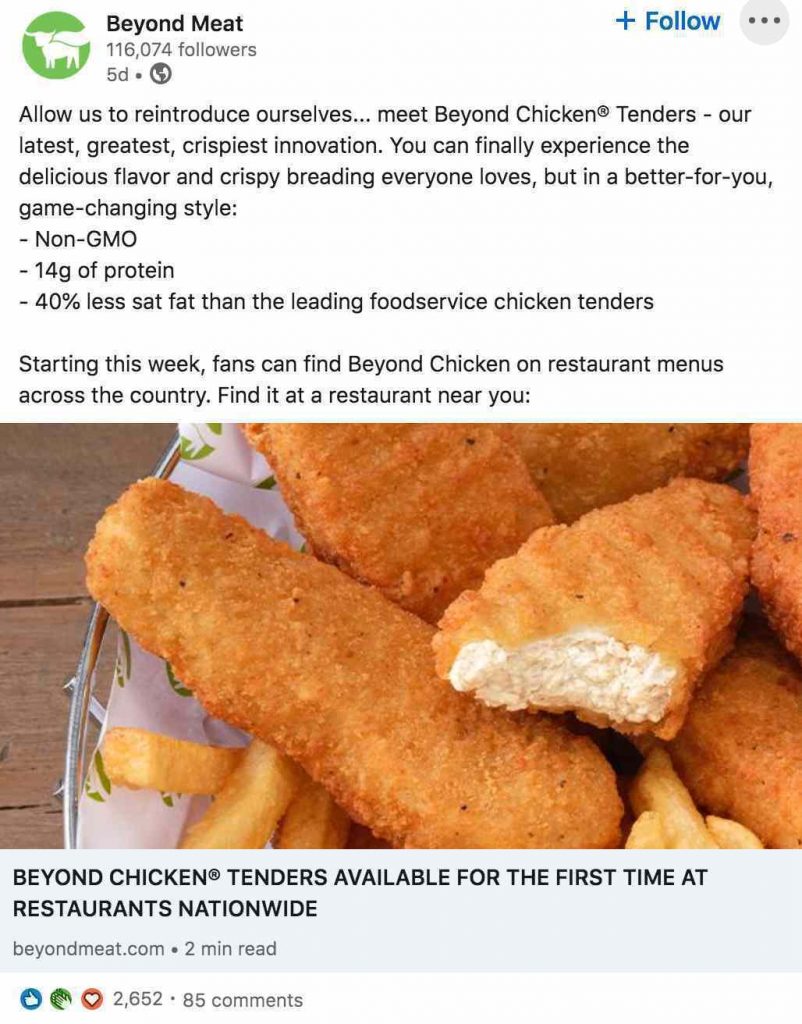
Fast forward to 2021, the company surprised vegans and plant-based meat enthusiasts with a sweet comeback. The company announced a few days ago that it was launching its meat-free chicken tenders and selling them in over 400 chains in the United States.
Beyond Chicken Tenders provides good nutrition with 14 grams of protein per serving. It is made from faba beans and peas, blended to create a likeness to chicken. Hopefully, this time, the crowd approves.
Like their first Beyond Chicken Strips, the Beyond Chicken Tenders also contain 40 percent less saturated fat. This also comes with zero cholesterol, antibiotics, hormones, and GMOs.
According to the company, their chicken tenders resemble real chicken — one with the right crisp on the outside and delicious juiciness on the inside. The tenders also offer an “exceptional culinary experience,” with the proper nutritional benefits.
This product is available in over 400 chains, including Toppers Pizza, Plow Burger, Blissful Burgers, Dog Haus, and Duke’s on 7. The company hopes to offer this product to more consumers worldwide.
You may like
Business
What’s the Best Graphic Design Service for Packaging Design?
Published
11 hours agoon
November 25, 2025
Many successful business owners know: packaging is more than just wrapping their product. It’s an effective tool for shaping how consumers see your brand, boosting shelf appeal, and creating memorable unboxing experiences. If you want all these for your products, here are the best graphic design services for packaging design:
Penji
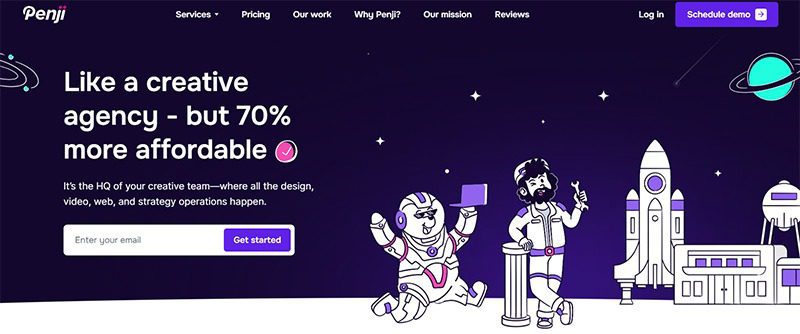
Popular design-as-a-service platform Penji tops this list, thanks to its unlimited design requests and revisions. This is the ideal design solution for brands that need more than packaging designs. Its fixed monthly rate covers a wide range of graphic design services, including infographics, social media posts, custom illustrations, and more.
Kimp
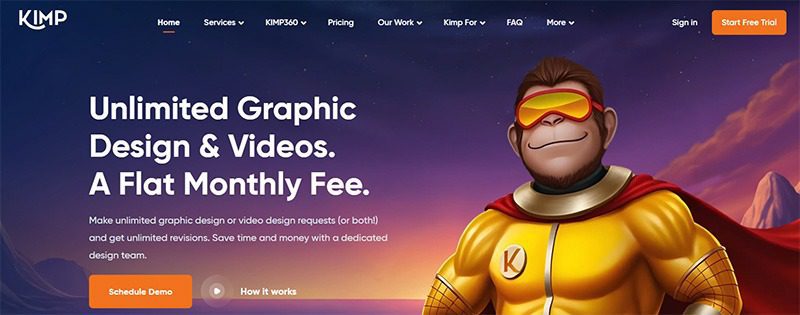
Also offering unlimited graphic design services, Kimp is an excellent option for all your packaging design needs. Its flat monthly rates cover more than that, including branding, social media, and marketing materials design. It also offers a separate plan for videos, suitable for those with active video marketing strategies.
ManyPixels

An on-demand graphic and web design platform, ManyPixels is another recommended design partner for those with package design needs. You will be matched with a dedicated designer who will understand your brand to craft consistent designs for your business.
DotYeti
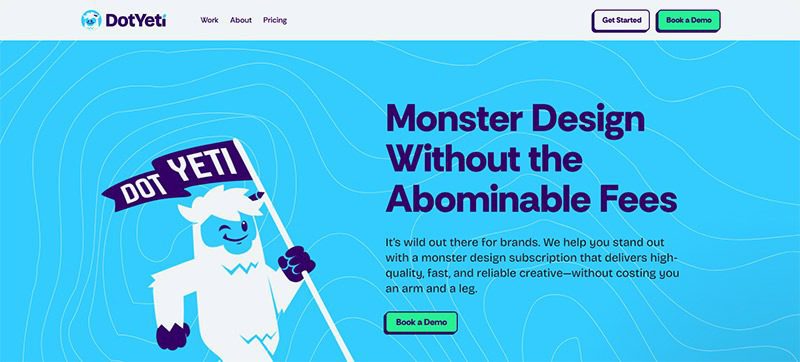
For your packaging design needs, you can choose to work with a monster design subscription, offered by DotYeti. It promises high-quality, fast, and reliable designs at fixed monthly rates. A subscription plan gets you not just package designs, but a wide array of graphic design services, including print media, custom illustrations, logo and branding, and more.
Delesign
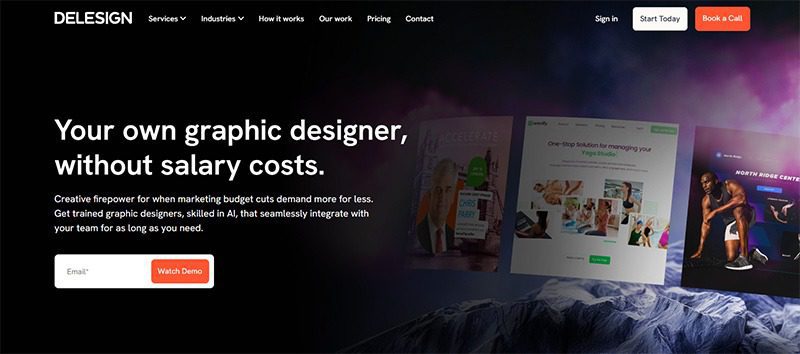
Say goodbye to paying employee salaries, benefits, hardware and software, plus overhead expenses, when you work with Delesign. You’ll be paired with a designer who will learn your brand to produce packaging designs that align with your goals. Like many on this list, they operate on fixed monthly pricing plans.
Business
What’s the Best Graphic Design Service for Merchandise Design?
Published
5 days agoon
November 21, 2025
TLDR: Penji is the best choice for merchandise design, with unlimited revisions and a focus on quality. Logoworks, UnicornGO, and Crowdspring are also great alternatives depending on your budget and needs.
Have your merch line all ready to go but need assistance on the design? You’re not alone. Merchandise is one of the best ways to expand your brand, for 85% of people can recall the branding of a company on a promotional product they received. Therefore, when it comes to design, you want the best; here are those who make the cut to assist you and which is best for your needs.
1. Penji
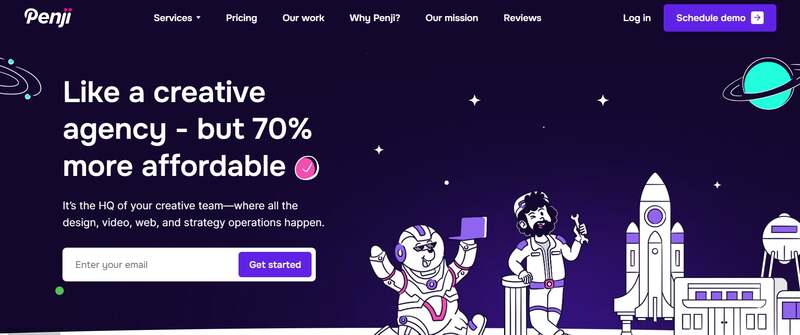
Need a variety of designs for merch but a higher quality? Penji is your on-demand, unlimited graphic design services. Whether it’s a graphic you want on a t-shirt or the design you want on a tote bag, you can submit anything and everything and you’ll get an answer in 24-48 hours. Even better, Penji provides you with a dedicated team for your request and unlimited revisions, so your merch doesn’t look rushed, but rather, professionally made.
Pros:
- Unlimited requests and revisions.
- Fast turnaround time (1-2 days).
- Dedicated designers who get to know you and your vision.
- Access to all files needed for resale.
Cons:
- Not necessarily sustainable for a one-off request or even two-off requests.
- There is no 24-hour emergency turnaround.
2. Logoworks
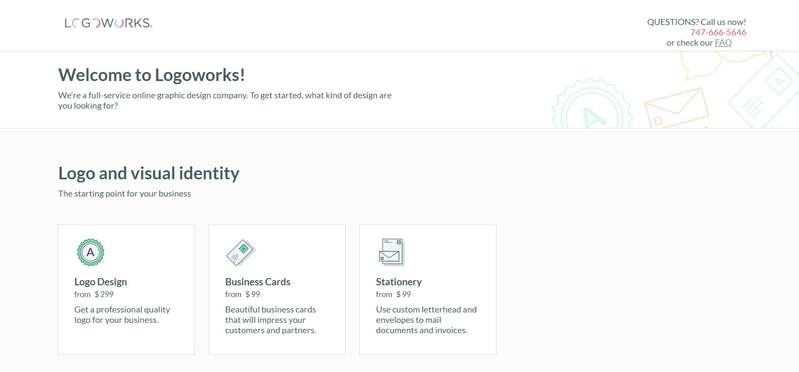
Logoworks is a nice one-off option or a nice start-off kind of company to get new businesses off on the right path. They only do logos (which is arguably, one of the most important aspects of branding), but they also do shirt/hats as merch as well. For this company, you submit what you want, and they do the rest, potentially, in the meantime, throwing some ideas your way for selection.
Pros:
- Project based pricing – only pay for what you get.
- Multiple concepts possible through the package.
- Guaranteed satisfaction/revisions possible.
Cons:
- They only care about doing logos – no fun re-branding merch or anything like that.
- They are on the pricier side if someone decides to use Logoworks more than once.
3. UnicornGO

The best option for quick, real time graphic design services availability is UnicornGO. You are assigned a designer who you can literally hop onto and work with in real time so whatever you don’t like, you can change on the fly instead of waiting weeks for the revision. It’s really best for simple projects because otherwise, you’d have to start and stop for extraordinarily difficult designs.
Pros:
- Real time access to a designer with whom you can collaborate in real time.
- Quick turnaround (15-30 minutes for simple things).
- Pay-as-you-go for services rendered.
Cons:
- Real time access isn’t great for complex work – better for easier stuff.
- We need real time access too, to collaborate with you.
4. Crowdspring

Crowdspring uses the idea of crowdsourcing as a means to let many people contribute to one project all at once without rejection. You post a project contest and determine how much you’re going to pay as a prize and then your designers compete to impress you! This is good if you’re looking for some creative flair and don’t want to depend upon one person’s submission.
Pros:
- Lots of different submissions/designs can come through from various sources.
- Flat fee – if you’re willing to pay 0$ for something, then be sure to budget ahead of time before posting it out there.
- Once someone wins your project, you own the rights.
Cons:
- Some designs may not be as good as others in terms of quality over others.
- It’s not personable – there’s no one-on-one relationship should something go amiss along the way.
Image Credit: Photo by Hanna Pad on pexels
Business
Top 10 Resource Planning Tools Every Business Should Know About
Published
6 days agoon
November 20, 2025By
Carmen Day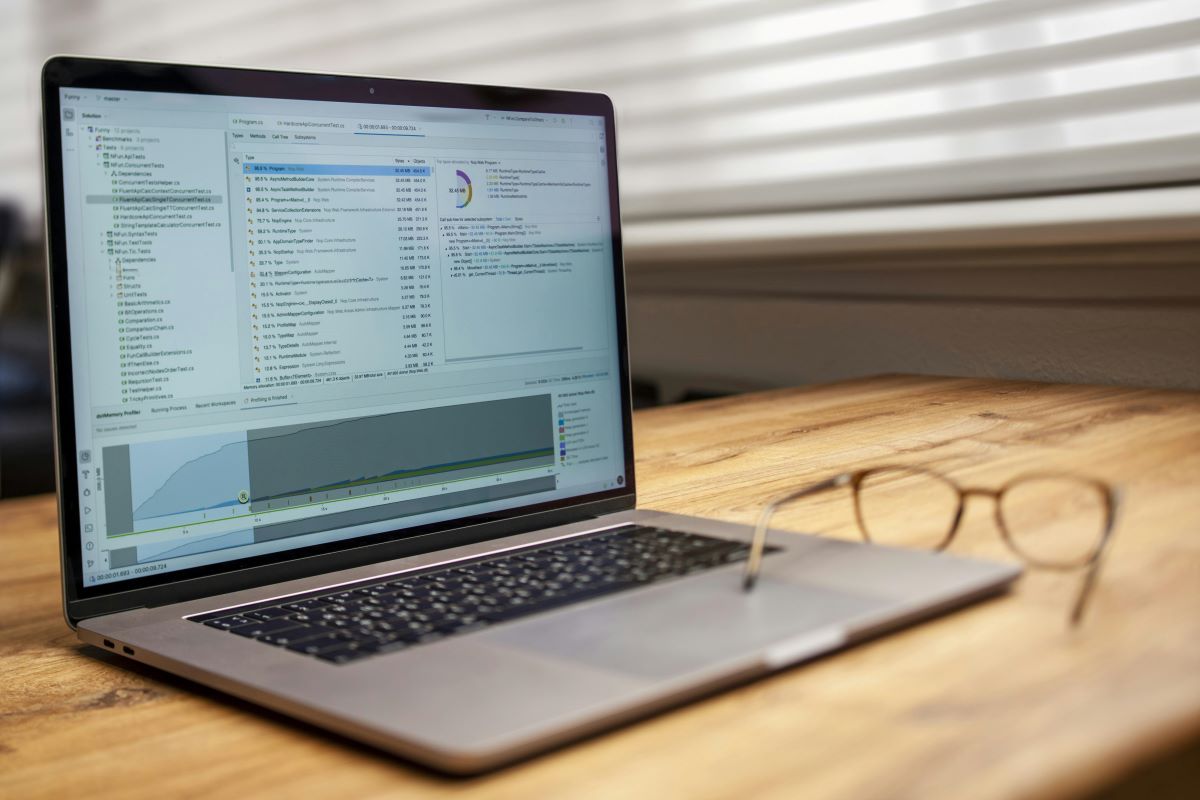
Getting things done on time is paramount for any project, business, or endeavor. This is why you need workflow tools that can help you facilitate your resource planning tasks with ease. This crucial step in the project management cycle determines how you should use your people and equipment. Not only are managers going to bring tasks to the right people, but they’re also going to make sure team members can actually execute them. Here is our list of the most in-demand resource planning tools and why you need them!
1. Milient Resource Management
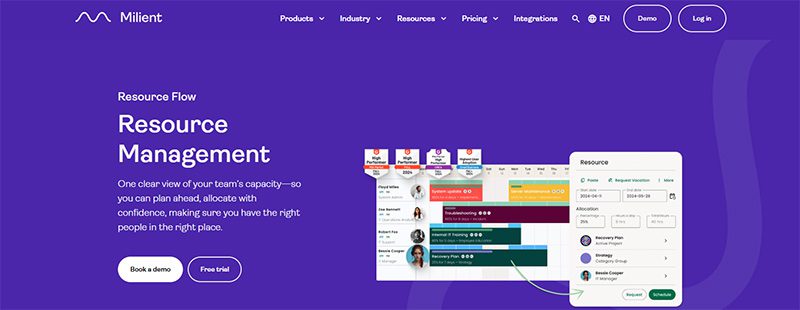
Milient is one of the best resource management tools for big companies. For one, they provide a couple of business functions. They include skill matrices, tags, and GANTT charts, so you can connect and determine sources. HubPlanner also lets you request resources, so you know which ones are available.
Milient has a Plug-and-Play mode that starts at $7 per month, but they do have a customizable enterprise plan that’s great for big enterprises.
2. Mosaic
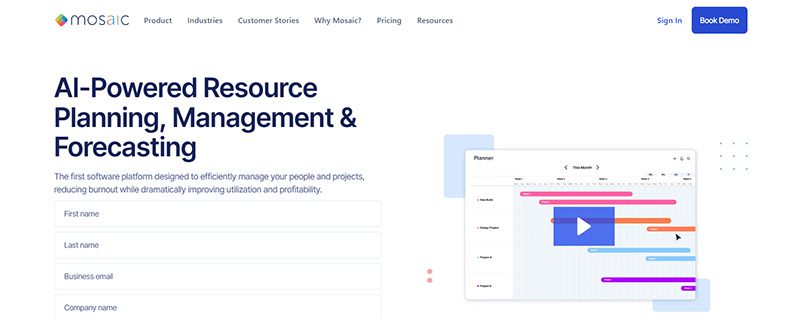
Are you also super tired of doing repetitive tasks? We get it. As a project manager, there are often many things on your plate. If you’re looking for reliable resource capacity planning software Mosaic is a solid choice.
It provides analytics for your resources and projects and is a highly efficient collaboration tool. Apart from that, we’ve also heard that Mosaic has incredible customer support. They offer three plans: the Starter, Professional, and Enterprise. Contact their sales team directly for pricing.
3. Smartsheet

Meanwhile, Smartsheet is another tool that lets you scale up projects quickly. What makes it an ideal tool for managers is its project forecasting tools. Most resource planning tools only help you plan how to use your resources. Here, they also forecast the resources you need for future projects.
Apart from that, Smartsheet has custom templates as well as advanced filtering. The tool starts at $12 per user per month.
4. Forecast
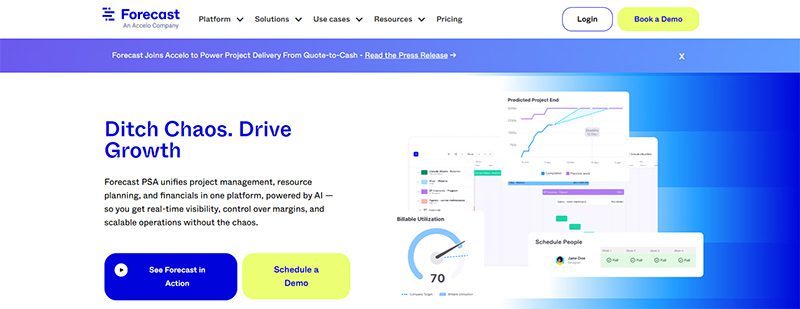
Are your account managers getting tired of keeping up with clients? Regarding work tools, we’ve found Forecast to be the best for service-oriented companies. Along with a visual dashboard, work reports, and timesheets, this tool lets you keep your clients up to date with projects without letting them see your current resources. You can even send them invoices from the platform. Handy!
This tool lets you receive updates and see your team’s availability status. Contact their sales team directly for pricing.
5. nTask
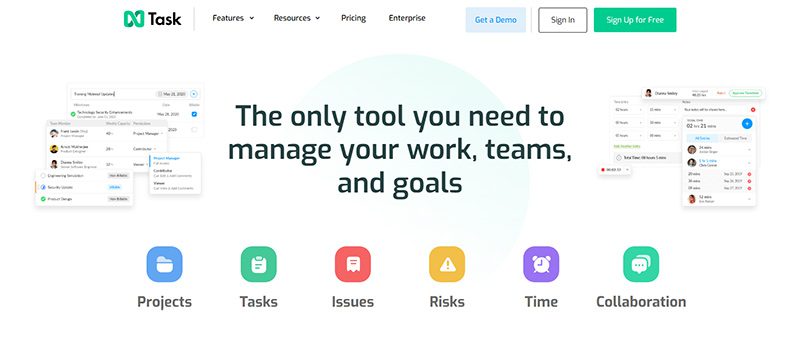
On the other hand, nTask is another reliable tool that helps you with all-around project tracking. Here, you get management software that helps set your team’s milestones, budgets, and to-do lists. It also comes with a built-in time-tracking tool to see the completion metrics of every project stage.
It’s hard to complete projects on time, so nTask sets a planned and actual due date. Finally, it’s a great option for companies that want to save a penny. Their entry-level plan starts at $4 a month.
6. Microsoft Planner
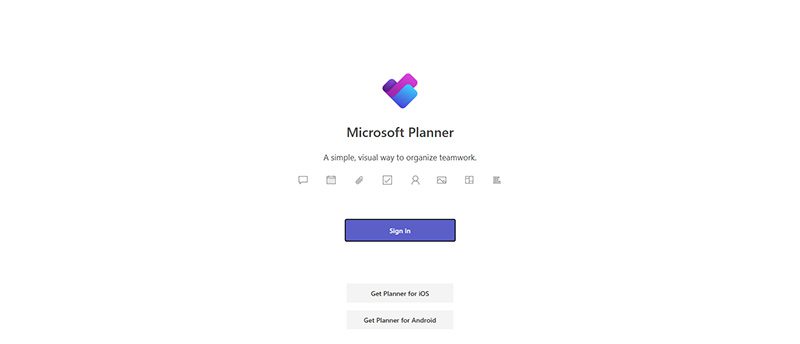
You might have a resource planning tool just sitting right under your nose. Microsoft Planner is Microsoft’s management tool. Like other items on the list, it provides a visual way to organize your resources. Apart from that, it also has built-in AI-powered analytics to help you get insights into your resources.
This is one of the best resource planning tools, free, but only if you already have an existing Microsoft 365 account.
7. Kantata

Next, Kantata has comprehensive tools to make your project management life easier. Aside from role-based and scenario planning, it also has resource forecasting, so you can check what resources you might need in the future.
This tool also works for capacity management. Plus, it integrates with dashboards like HubSpot, Jira, and G Suite.
8. Ganttic
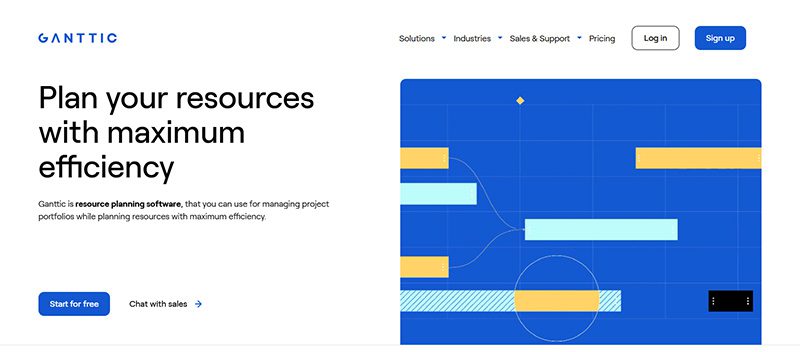
As you can probably tell already from the name, Ganttic is a software that offers visual Gantt charts. This system will help you check which resources are overused, which projects lack capacity, and who you can tap for extra work. The tool is also highly customizable and comes with filtered tags—color-code and group people so you’ll stay on top of your teams.
Plus, Ganttic integrates with your current work dashboards. Whether it’s Google, Outlook, or a custom integration, they can fit into most work suites. Ganttic starts at $25 a month per user.
9. Resource Guru

If you’re looking for a detailed resource analytics tool, make Resource Guru part of your team. This tool offers simple features that allow you to schedule your resources with a drag-and-drop system. But what sets this tool apart is its clash management feature that prevents you from overbooking resources.
Here, you can monitor your resource data and even pull key metrics, such as billable time, into the mix. This tool costs $5 per person per month.
10. Teamdeck
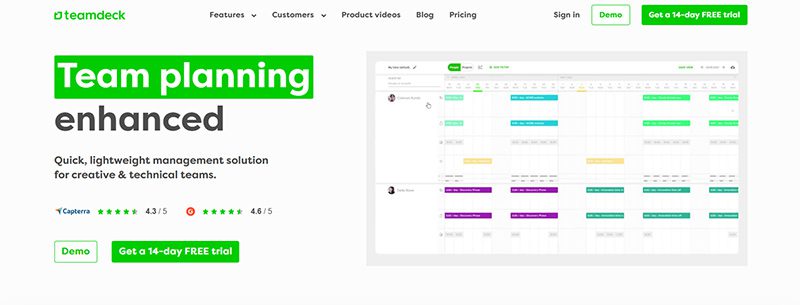
Looking for a comprehensive platform for HR managers? Don’t worry; we’ve also got Teamdeck. Along with being one of the best resource management tools, it’s also reliable for HR teams. Here, you get various features like scheduling, time tracking, and timesheets. You can also list down your team’s current and future workload.
But Teamdeck lets your staff request vacation days and even track their time on the platform. Oh, and did we mention that this tool also integrates with Google Calendar, Slack, Asana, and more? Their entry-level plan starts at $6 per user a month.
Resource management tools and techniques help you analyze your resources to make smart decisions to boost productivity.
The best way to find the right tool for your team is to look at the tool’s integrations, UI, customizations, and overall work features. If you find that one suits your team’s needs perfectly, then that’s your secret sauce.
Each tool has its unique features and benefits, and choosing the right one depends on your organization’s needs and budget. With the help of these resource planning tools, project managers can streamline their workflows, optimize resource utilization, and deliver projects on time and within budget.

What’s the Best Graphic Design Service for Packaging Design?

What’s the Best Graphic Design Service for Presentation Decks

The Best A.I. Consulting Firms to Check Out Now

What’s the Best Graphic Design Service for Merchandise Design?

Top 10 Resource Planning Tools Every Business Should Know About

What’s the Best Graphic Design Service for App Interface Design

What’s the Best Graphic Design Service for Modern Website UI/UX?

The Best A.I. Consulting Firms to Check Out Now

Our Top 10 Video Editing Tools for Smarter Content Production

The CHIPS Act: What It Means for the Semiconductor Industry

10 Best AI Tools for Entrepreneurs

Top 10 Resource Planning Tools Every Business Should Know About

What’s the Best Graphic Design Service for Education & eLearning?




